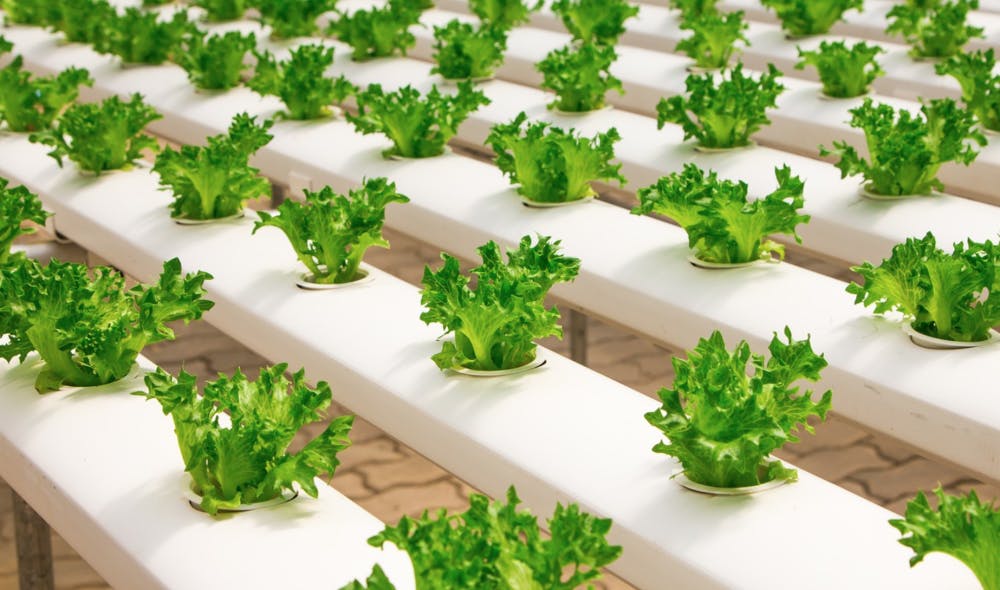By Tyler Gillette
The ProblemTraditional agriculture that is used today is not the most environmentally-friendly due to issues with fertilizer application, pesticides, herbicides and water usage. Fertilizers pollute water sources by adding high levels of phosphorus and nitrogen through runoff. Pesticides and herbicides are toxic and are also added through runoff. There are also the issues of the insects, weeds,pests and soil-borne diseases. It also requires a lot of water to use the traditional farming method, since the water runs off, evaporates or the soil takes up a lot of it. There is also a lot of labor involved and a need for knowledge about soil.Solution 1: HydroponicsHydroponics is the growing of plants in nutrient-filled water without soil. Fertilizer is pumped through the water frequently for the plants to use. Everything in these systems is automatic and self-functioning. This is because plants don’t use soil; they use the nutrients and water in the soil. They only need water, light and nutrients to grow. The nutrients are dissolved directly in the water and taken up directly by the roots.The Babylonians, Aztecs, Egyptians and the Chinese started to use hydroponic methods hundreds of years ago. These methods began getting more research when people wanted a way to grow produce in non-arable parts of the world or places with little to no soil. There are a lot of benefits to hydroponics. Hydroponics produces higher yields than soil. You also can grow more plants in the same space as a soil garden. This type of system also does not require pesticide and herbicides, making it an environmentally-friendly way to grow crops. There is also no soil-borne diseases. Plants grow faster and are ready for harvest sooner. The plants mature up to 25 percent faster and produce up to 30 percent more yield than plants in soil. This is because plants spend more energy and resources on growing than acquiring nutrients. Hydroponics can be used commercially or in your own backyard. There are also different sizes from huge commercial scale to small kitchen size. You can also grow them year round. This system also uses less water than soil, since the water is recycled and reused with little to no evaporation. Hydroponics reduces waste and pollution such as high amounts of nutrients from soil runoff because there is no runoff or waste from this system. Many types of plants can be grown this way.Even though there is a lot of benefits to hydroponics, there are some disadvantages. One is the cost the equipment you need. Another disadvantage is the maintenance and upkeep to make sure your water, light, temperature, nutrient levels, pumping and aeration are all in good condition. Since plants grown with hydroponics have small roots, they may need support to hold them.Solution 2: AquaponicsAquaponics uses hydroponics but also has fish involved in the process. This system reflects nature and aquatic ecosystems because it mimics the natural beneficial cycle that fish and plants use in nature. This is an environmentally-friendly and efficient way to make food as well. Aquaponics works because the fish produce waste that puts nitrates and ammonia in the water that the plants use to grow. The plants purify and filter the water for the fish. The common fish that most commercial systems use is tilapia. This system was also used by the Chinese and the Aztecs. There are also many benefits to aquaponics. The main one is that there is no synthetic fertilizers, only natural fertilizer created by the fish. You also get to harvest the plants and fish. This is a very organic method. Once again, this system recycles and reuses the same water, but some water may need to be added due to some evaporation. This system can also be used on a large commercial scale or used at home for many different plants. Aquaponics involves less maintenance than hydroponics, since once the system has been running for awhile it should be self-sufficient except some occasional maintenance. Hydroponic systems can get a disease called root rot, but it does not happen in aquaponics. There is little to no prevalence of fish diseases in these systems. It uses only 1/10th of the water of soil-based gardening and even less water than hydroponics.Photo via Pixababy.

